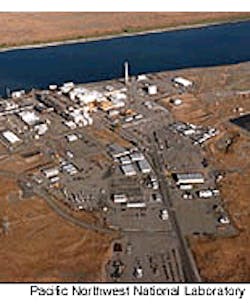Groundwater Cleanup Too Slow at Nation's Most Toxic Nuclear Site
A new federal audit has concluded that the U.S. Department of Energy has not made adequate progress in treating contaminated groundwater at the nation's most contaminated nuclear site in Hanford, Wash.
The agency has estimated that during decades of plutonium production for the nation's nuclear weapons arsenal, a total of 80 square miles of Hanford's groundwater was contaminated at levels exceeding state and federal drinking water standards. Underground tanks in the center of the Hanford Site store about 50 million gallons of waste from producing the plutonium over the years.
Released yesterday by the Energy Department's inspector general, the study reviewed the effectiveness of the agency's methods for treating the contaminated water. They use "pump-and-treat" systems that siphon contaminated water out of the ground, run it through filters, then re-inject it.
The audit concluded these systems have been "largely ineffective." The department has spent more than $85 million over the past eight years and will continue to spend about $8 million annually to operate the systems. More than $230 million is scheduled to be spent on surface barriers.
The 586-square-mile reservation in south-central Washington made plutonium for the nation's nuclear weapons for 40 years, starting with the top-secret Manhattan Project to build an atomic bomb.
Cleanup costs are expected to total $50 billion to $60 billion, with the work to be finished by 2035.
Source: The Associated Press
